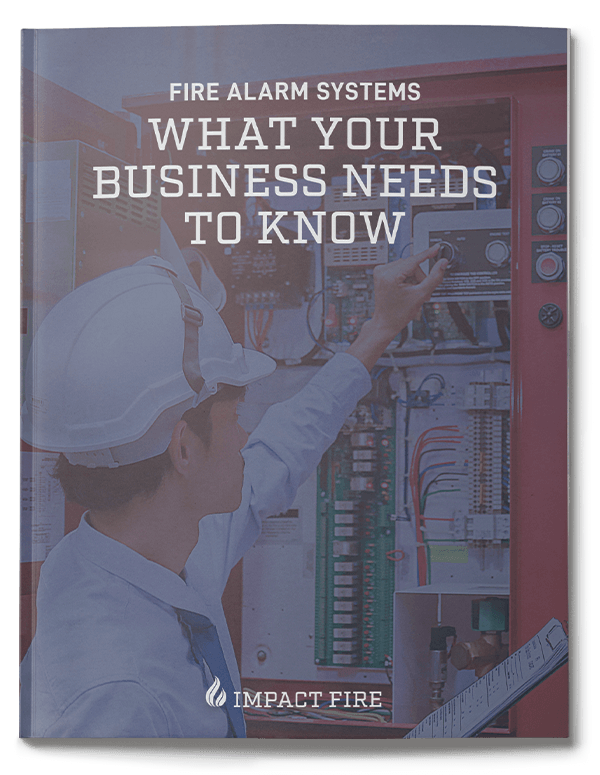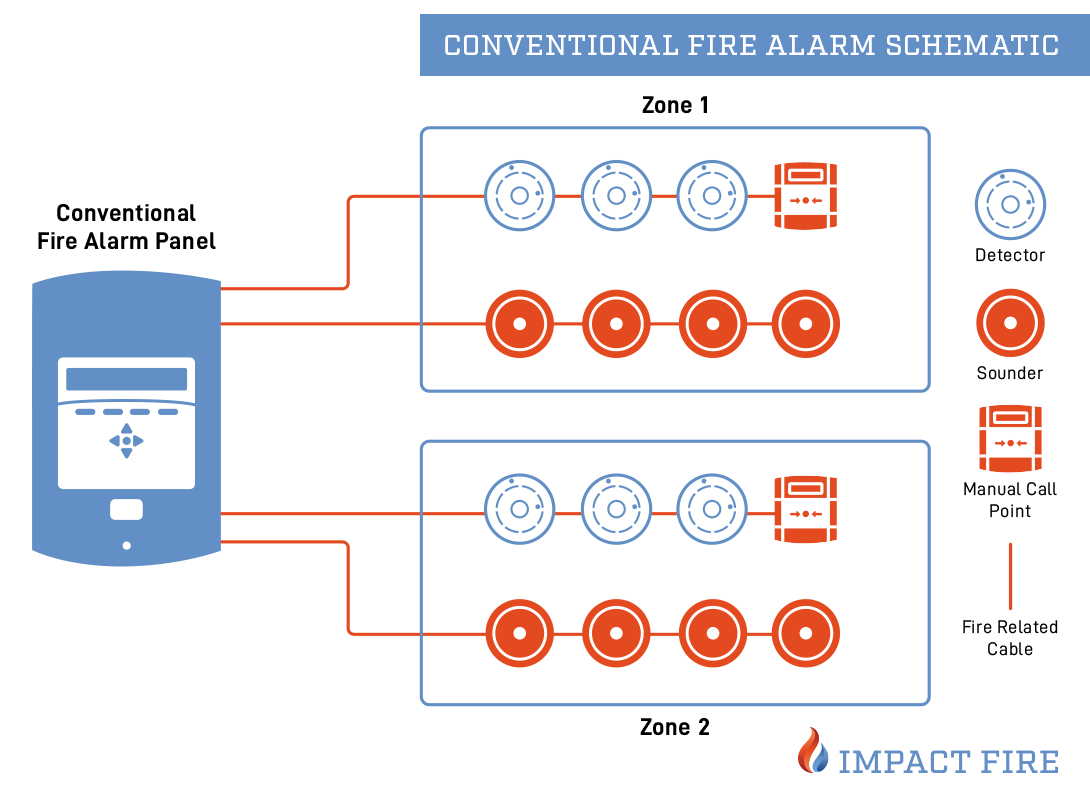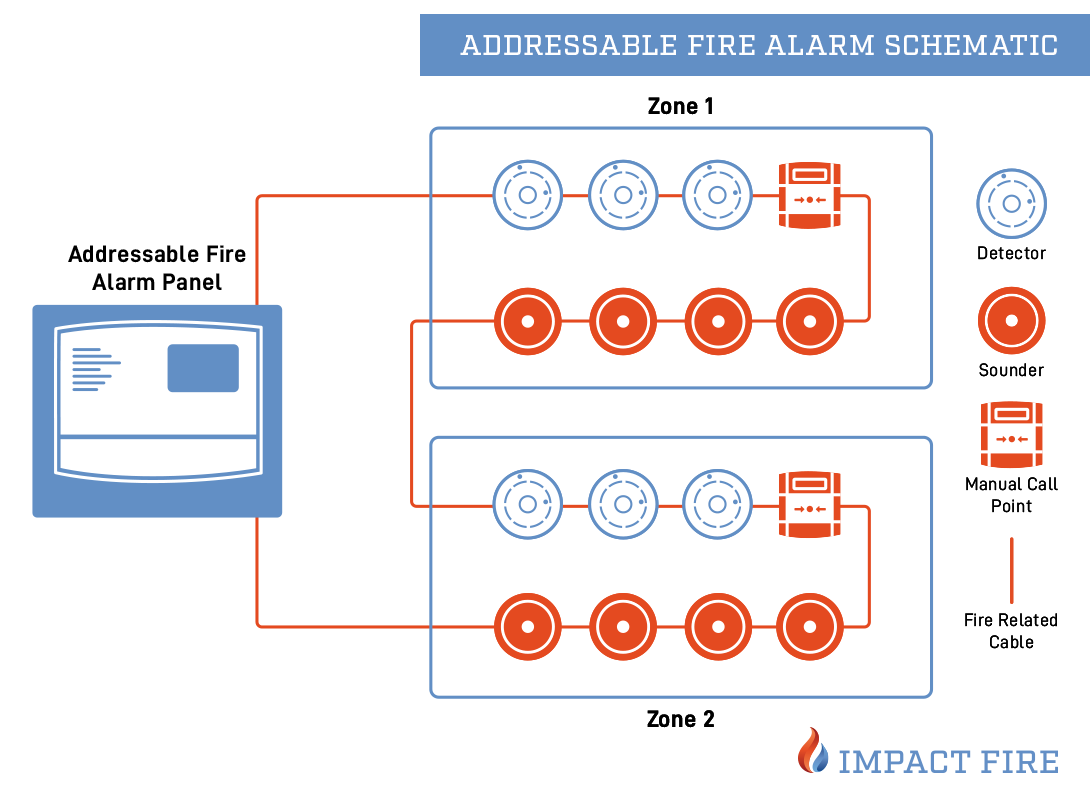Building owners and property managers must conduct periodic fire alarm inspections, testing, and maintenance (ITM) to ensure regulatory compliance and system functionality. NFPA 72 outlines the ITM requirements for fire alarm systems, including initiating devices and notification appliances.
While ITM schedules vary based on system type, the general guidelines established by NFPA state that fire alarms must be thoroughly inspected and tested at the following intervals:
- Weekly
- Monthly
- Quarterly
- Semi-annually
- Annually
- Every five years
- Every ten years
PRO TIP: Most fire and life safety professionals recommend visual inspections every month and function tests at least quarterly.
Remember, ITM requirements for fire alarms vary depending on your local authority having jurisdiction (AHJ) and the type of system you have. It’s best to contact your local Impact Fire branch for fire code compliance consultation in your area.
Let’s take a closer look at the ITM requirements for fire alarm systems.
Visual Inspections
A fire alarm inspection is a visual assessment that verifies that the system and its related components appear to be operating optimally, in the proper location, and free of physical damage. Your employees can conduct visual inspections in-house if they have been adequately trained in fire safety. Your in-house staff is permitted to perform visual inspections at the following intervals:
Here are some of the most common visual inspections:
- Inspect CO2 detectors and batteries
- Ensure all fire alarm components are clearly labeled and in an easily accessible location.
- Check for missing parts, such as wires pulled out of sockets or smoke detectors not securely attached to the wall.
- Examine the control panel and related equipment to ensure it's free from dust, dirt, corrosion, and any other signs of wear and tear
Functional Tests
Functional testing is an in-depth examination of the fire alarm system’s operation and performance. During functional tests, technicians will simulate real-world conditions to uncover malfunctions and ensure all components work as intended. Once the test is complete, a detailed report outlines system deficiencies, including recommendations for code compliance.
While trained employees can conduct visual inspections in-house, more rigorous functional tests require an experienced fire and security company like Impact Fire. A certified technician must perform the following functional tests:
- Semi-annual
- Annual
- Five-year
- Ten-year
According to NFPA 72, most fire alarm components require annual testing. However, there are a few that require semi-annual testing. Here are some of the fire alarm components that should be tested periodically.
- Control panels
- Initiating devices
- Remote annunciators
- Secondary power supply
- Alarm notification appliances
- Heat, smoke, and duct detectors
Preventative Maintenance
Commercial fire alarm systems are ineffective if improperly maintained. Proactive fire alarm maintenance helps extend system longevity, prevent false alarms, and avoid unnecessary disruption to business operations. Additionally, regularly scheduled maintenance ensures that the system complies with local codes and regulations.
Fire alarm maintenance frequency is determined by several factors, including:
- Equipment type
- Manufacturer guidelines
- Environmental conditions
Insurance companies and local authorities have their own standards of maintenance for fire alarm systems, which can sometimes be more stringent than the NFPA. Each system is unique, so it is important to consider all guidelines from the manufacturer, the NFPA, and any relevant authorities when creating a maintenance schedule.
When partnering with a qualified fire protection company, look to see if they offer the following preventive maintenance services:
- Replacement equipment
- Emergency repair services
- Precise record-keeping and reporting
- Qualified technicians with 24/7 availability to respond to your needs
- Annual and biennial equipment maintenance following manufacturer guideline






